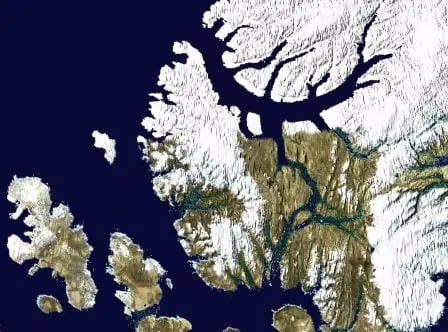“If the clouds be full of rain, they empty themselves upon the earth: and if the tree fall toward the south, or toward the north, in the place where the tree falleth, there it shall be.” Ecclesiastes 11:3
Axel Heiberg Island in Northern Canada is the closest point of land to the North Pole. The landscape is completely barren today, but long ago a dense forest of large meta-sequoia trees grew there. At that time, the climate must have been like Florida today. The stumps of these “fossil trees” have not mineralized and are still wood – that is, cellulose. They are claimed to be 45 million years old.
 Researchers at Johns Hopkins University studied the hydrogen and oxygen isotopes of the cellulose. These lightweight isotopes are normally quickly lost by evaporation from dead wood, but to their surprise, the researchers discovered an unusually high content. This means that their rate of evaporation was extremely low. In other words, not only did the trees grow in a humid climate, but this climate continued a long time after the trees were destroyed. Further, cellulose is quickly broken down by bacterial action if exposed to air so that the trees were buried rapidly, deeply and a lot more recently than 45 million years ago.
Researchers at Johns Hopkins University studied the hydrogen and oxygen isotopes of the cellulose. These lightweight isotopes are normally quickly lost by evaporation from dead wood, but to their surprise, the researchers discovered an unusually high content. This means that their rate of evaporation was extremely low. In other words, not only did the trees grow in a humid climate, but this climate continued a long time after the trees were destroyed. Further, cellulose is quickly broken down by bacterial action if exposed to air so that the trees were buried rapidly, deeply and a lot more recently than 45 million years ago.
Creation Moments happened to be present when a sample of this wood was used to calibrate the equipment at a well-known Carbon 14 dating laboratory. Believing the wood to be 45 million years old, it should contain no Carbon 14 but, in fact, it did and dated at only 41 thousand years!





